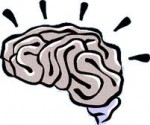Since 2007, the American Psychological Association has commissioned the annual nationwide Stress in America™ survey to examine the state of stress across the country and draw attention to its potentially serious physical and emotional consequences. This handy little survey measures attitudes and perceptions of stress and identifies prominent sources of stress, behaviors commonly used to manage stress, and the impact that stress has on our lives.
Year after year, participants’ responses have revealed high stress levels, reliance on unhealthy behaviors to manage stress and alarming physical health consequences of stress. Key findings indicate that nearly three-quarters of Americans say they experience stress at levels that exceed what they define as healthy. Money, work, the economy, and personal and family health are the most frequently cited causes of stress. Although, overall, people seem to recognize that stress can have an impact on health and well-being, citing irritability or anger, fatigue, lack of interest, motivation or energy, headaches, upset stomachs, and changes in appetite and sex drive as commonly experienced psychological and physiological responses to stress, they do not necessarily take action to prevent stress or manage it well. Sizeable proportions of adults of all ages report using maladaptive coping behaviors such as, overeating or eating unhealthy foods, skipping meals, smoking, drinking and sedentary activities such as watching television or listening to music, to alleviate stress in the short-term rather than taking the necessary steps to decrease stress and improve health in the long run. Lack of willpower and time constraints are the most commonly cited impediments to healthy and sustainable lifestyle or behavior change. Since research shows that stress and the unhealthy behaviors people use to manage it are key drivers and proven precursors of many chronic illnesses and conditions, including high blood pressure, heart disease, stroke, type 2 diabetes, certain types of cancer, arthritis, depression, anxiety, and substance abuse, people who cope with stress in unhealthy ways are likely to end up creating significant personal health problems and more stress in the long run. Overall, Americans appear to be caught in a vicious cycle where they experience high levels of stress and because they are unable to take the steps necessary to alleviate stress and improve health long-term, engage in maladaptive coping behaviors to alleviate it in the moment, thereby creating serious health problems and even more stress.
I’m beginning to wonder if stress is just a part of the American identity. We, as a society, do not appear to value stress reduction. We seem to value the opposite, admiring and rewarding the person who not only multitasks doing two or three things at once, but five. Exceedingly stressed and excessively busy lifestyles, it seems, have become a necessary component to achieving the American dream and until we learn to value a more balanced and serene life, stress could easily become our next public health crisis.
Google “stress management” and you will get a million and one hits identifying a multitude of strategies for managing stress. Exercise. Get more sleep. Breathe. Meditate. Take a vacation. Relax. Sound familiar? None of these strategies that people try when they are already feeling stressed out are new to us, and if you are able to integrate any of them into your life, I highly recommend it. But what about strategies for reducing the amount of stress we allow in and take on in the first place? Surely there is a way to stop some of it before it ever happens, right? I think so.
The next post will begin discussing some things we might do to take on some of our own stressors. In the meantime, can you identify what are some of the recurring stressors in your life? Can you then identify any unhealthy behaviors that you use to help you alleviate your stress?

